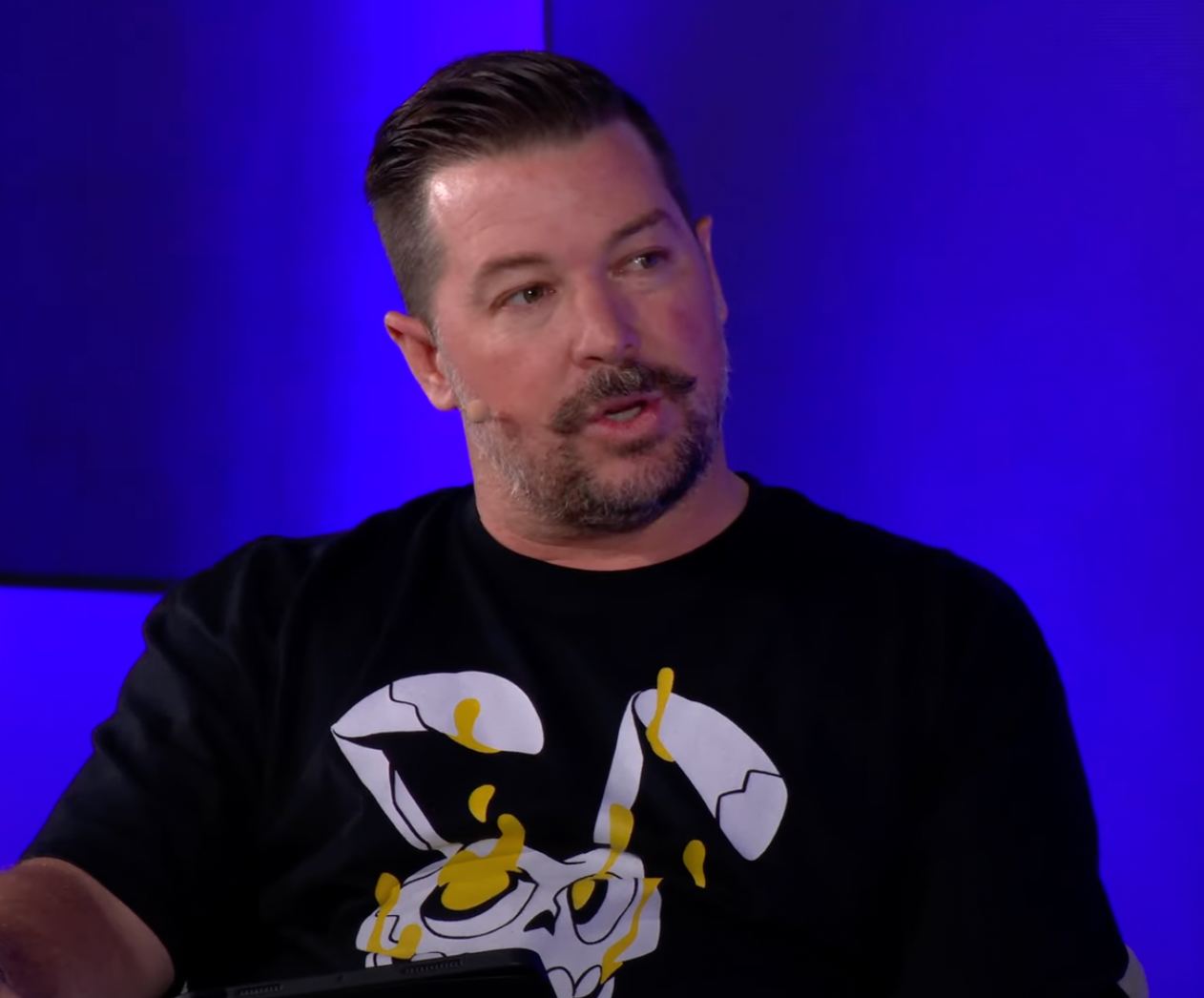Embark on a transformative exploration of the web's next evolution with us, Joeri Billast, and the visionary entrepreneur Corey Wright.
Discover the strategic insights and personal anecdotes that Corey brings to the table, as we dissect the seismic shift from Web2 to Web3 business models. Our conversation uncovers the fundamental principles of creating a substantial product before stoking the fires of hype—a stark deviation from the Web3 norm. Corey imparts wisdom on building with substance, establishing sustainable revenue streams, and the art of resilience in the face of Web3's unpredictable whirlwind, all while recounting his path from leadership coaching to pioneering Hexicon Studios.
As we navigate the uncharted territories of Web3 gaming, we discuss the crafting of a game ecosystem that's not only enduring but also prioritizes player satisfaction. Our discussion ventures into the art of attracting both Web2 loyalists and Web3 converts, ensuring everyone enjoys a frictionless and gratifying gaming experience. We share strategies for adapting traditional marketing to this novel landscape, touching upon the organic growth fueled by community engagement and the triumphs of launching a Web3 game into the mainstream.
Rounding off our discussion, we shine a spotlight on the delicate craft of fostering a gaming community built on respect and positivity. I share insights into the importance of transparent communication and the strategic decisions that shape Honeyland's in-game economy, where player enjoyment and asset value go hand in hand. Community success stories highlight the profound impact a well-designed game can have beyond the screen—contributing to both the joy and financial health of its players. Join us for tales of innovation and the pioneering spirit of Web3 gaming.
Unlocking the Future of Gaming: The Web3 Revolution
Are you ready to step into the future of gaming? Imagine a world where your gaming experience is not just about playing, but owning, creating, and connecting in ways never before possible.
In this exploration, we'll uncover the transformative power of Web3 in the gaming industry. From building successful businesses that prioritize product quality over hype, to transitioning from traditional gaming models to innovative, decentralized platforms, we're diving deep into what makes Web3 gaming a game-changer. We'll also tackle the challenges and opportunities of marketing in this new era, the importance of community, and the strategies for creating a sustainable gaming economy that values player happiness above all.
The impact of Web3 on gaming is profound, offering a new level of engagement, ownership, and community. It's not just about playing games; it's about being part of something bigger, where every player's contribution shapes the future of the gaming world.
Curious about how this all comes together? Stay tuned as we answer these questions and more, providing you with a roadmap to navigating and thriving in the Web3 gaming space.
Building a Successful Web3 Business
The Importance of a Product-First Approach in Generating Hype
Starting with a solid foundation is critical in the Web3 space, where the allure of quick hype can often overshadow the necessity for a real, tangible product. Unlike the traditional approach where generating buzz and then figuring out the product seems to be the norm, flipping this strategy on its head has proven to be far more effective. By dedicating time and resources to developing a high-quality product first, the hype naturally follows. This method ensures that there's substantial value and substance behind the project, making it more than just a fleeting trend. It's a testament to the idea that a great product speaks for itself, attracting attention and interest organically through its merits.
The Necessity of a Revenue-Generating Business Model in Web3
In the exhilarating world of Web3, it's easy to get caught up in the initial influx of capital from activities like NFT mints or token sales. However, this often leads to a false sense of financial security. The reality hits hard when the realization dawns that these are not infinite resources. A revenue-generating business model is not just beneficial but essential for sustainability in the Web3 ecosystem. It's about looking beyond the initial capital infusion and establishing a model that continues to generate revenue over time. This approach ensures that the project can support and service its offerings, like NFT memberships, in the long term without running dry financially. It's a shift from viewing capital as a one-time windfall to treating it as a stepping stone towards building a profitable, enduring business.
The Unique Mindset Required for Navigating the Fast-Paced Web3 Environment
The Web3 world is renowned for its rapid pace and volatility, presenting a unique set of challenges and opportunities. It requires a special kind of resilience and adaptability to thrive in such an environment. The highs can be exhilarating, offering unprecedented growth and success in short periods. Conversely, the lows can be equally demoralizing, with setbacks and failures feeling all the more acute. This rollercoaster of emotions is part and parcel of the Web3 experience. Embracing this reality and preparing for a constant state of flux is vital. It's about leveraging the good times to build momentum while using the downtimes as learning opportunities and springboards for future endeavors. The key is to remain agile, always ready to pivot and adapt to the ever-changing Web3 landscapes.
The Ups and Downs of Operating in the Web3 Space
Navigating the Web3 space is akin to riding a rollercoaster with its thrilling highs and daunting lows. This dynamic environment is both a blessing and a curse, offering a unique blend of opportunities and challenges. On one hand, the potential for rapid growth and innovation is immense, with new technologies and platforms emerging at a breakneck pace. On the other hand, the volatility and uncertainty can be overwhelming, with market trends and consumer interests shifting rapidly. The key to success lies in embracing this duality, recognizing that the lows are temporary and the highs, while exhilarating, are not the end goal but rather milestones along the way. It's about maintaining a balanced perspective, staying focused on the long-term vision while navigating the short-term fluctuations with grace and resilience.
Transitioning from Web2 to Web3
The motivation behind launching a Web3 gaming studio stems from a desire to innovate and venture into new territories. After years of operating within the Web2 paradigm, the allure of Web3's decentralized nature and its potential for creating unique, player-centric gaming experiences became too compelling to ignore. This transition represents not just a shift in technology but a fundamental change in how games are developed, distributed, and experienced by players. The decision to launch a Web3 gaming studio is driven by the vision to leverage blockchain technology to introduce a new level of interactivity and ownership in gaming, something that traditional platforms have struggled to offer.
The role of timing and opportunity in the transition is critical. The leap into Web3 came at a moment when the digital world was ripe for innovation, with blockchain technology gaining mainstream attention. This serendipitous timing allowed for the exploration of new possibilities in gaming, capitalizing on the growing interest in decentralized applications. The decision was not just about adopting a new technology but about seizing an opportunity at the right moment, when the market was beginning to understand and embrace the potential of Web3. It's a testament to the idea that successful ventures often result from the convergence of the right idea, at the right time, with the right team.
The influence of past entrepreneurial ventures on the transition is undeniable. Years of experience in launching, scaling, and selling businesses have provided a solid foundation and a deep understanding of what it takes to build a successful venture. This wealth of experience has been instrumental in navigating the complexities of the Web3 space, where the rules of engagement are still being written. The lessons learned from previous entrepreneurial endeavors have informed the approach to building a Web3 gaming studio, emphasizing the importance of innovation, user experience, and sustainable business models. It's a blend of past wisdom and future-oriented thinking that shapes the strategy for success in the Web3 arena.
The impact of co-founders on the decision to transition highlights the importance of collaboration and shared vision. The decision to venture into Web3 gaming was significantly influenced by the partnership with co-founders who shared a similar passion for innovation and a belief in the potential of blockchain technology. These partnerships brought together diverse skills, experiences, and perspectives, creating a strong foundation for the new venture. The synergy among co-founders has been a driving force behind the studio's direction, ensuring that the transition from Web2 to Web3 is not just a technological shift but a collective leap towards redefining the future of gaming. It underscores the notion that behind every successful venture, there's a team of visionaries united by a common goal.

Corey Wright - Entrepreneur & Web3 Game CEO
Standing Out in the Web3 Gaming Market
The approach to building a unique game ecosystem is foundational to distinguishing a Web3 game in a crowded market. This involves not only the technical aspects of game development but also a deep understanding of what makes a gaming experience truly engaging and sustainable over time. By challenging the norms and questioning the status quo, the aim is to iterate or innovate at every possible juncture. This includes the mechanics of the game, the underlying economy, and the overall structure of the game's ecosystem. A focus on sustainability ensures that the game is designed not just for short-term engagement but for long-term viability. This means moving away from models that rely heavily on initial player investment without a clear path to ongoing revenue generation. Instead, the emphasis is on creating a balanced and fair ecosystem that rewards players, encourages participation, and supports the game's growth and evolution.
The focus on player experience in Web3 gaming is paramount. The goal is to create an immersive and accessible experience that can attract and retain players from both the Web2 and Web3 spaces. This involves obsessing over the player's entire gaming lifecycle, from discovery and onboarding to engagement and retention. Understanding the barriers that have traditionally kept Web2 players at bay from Web3 gaming—such as the complexity of blockchain technology, the need for digital wallets, and the perception of high entry costs—is critical. By addressing these friction points directly, the aim is to lower the barriers to entry, making it easy for anyone to start playing without needing to be deeply versed in Web3 technologies. This approach not only broadens the potential audience for the game but also enriches the gaming community by bringing in diverse perspectives and experiences.
The strategy to attract both Web2 and Web3 gamers hinges on understanding the unique preferences and expectations of each group. For Web3 gamers, the allure often lies in the novel experiences that blockchain technology can offer, such as true ownership of in-game assets and the ability to earn through play. For Web2 gamers, the focus is more on the quality of the gameplay, the story, and the overall user experience. Bridging these two worlds requires a game that not only leverages the best of Web3 technology but also delivers on the fundamentals of what makes a game enjoyable. This includes high-quality graphics, engaging gameplay, and a compelling narrative. By leveraging the team's expertise in mobile ad tech and user acquisition, the strategy involves using both traditional and Web3-specific channels to reach and engage players. This dual approach ensures that the game is accessible and appealing to a broad audience, regardless of their familiarity with Web3.
The importance of removing friction points for gamers is a critical aspect of creating a successful Web3 game. This means making the game as accessible and easy to play as possible, regardless of a player's background in blockchain or gaming. Efforts to streamline the onboarding process, simplify transactions, and integrate with familiar platforms and payment methods are key. By allowing players to sign up with common accounts, make in-app purchases without needing to understand cryptocurrency, and participate in the game's economy through intuitive interfaces, the barriers to entry are significantly reduced. This focus on accessibility not only helps to attract a wider audience but also contributes to a more inclusive and vibrant gaming community. It's about creating a seamless experience that invites players to enjoy the benefits of Web3 gaming without the hassle, making it just as easy and enjoyable for a seasoned gamer as it is for someone new to the space.
Marketing Strategies for Web3 Games
The role of traditional and Web3 marketing in user acquisition is a nuanced blend of strategies aimed at capturing the attention of both Web2 and Web3 audiences. In the dynamic world of gaming, where competition is fierce and player expectations are high, leveraging both traditional marketing channels and the unique opportunities presented by Web3 can create a powerful synergy. Traditional marketing, with its broad reach and established methodologies, provides a solid foundation for introducing a game to a wide audience. This includes everything from social media campaigns and influencer partnerships to search engine marketing and content creation. These tried-and-tested methods are invaluable for building brand awareness and driving initial interest. On the flip side, Web3 marketing introduces innovative approaches that capitalize on the decentralized nature of blockchain technology. This includes engaging with communities on platforms like Discord and Twitter, utilizing NFT drops to generate buzz, and leveraging token-based incentives to encourage player engagement and loyalty. The key is to create a sense of ownership and investment among the community, turning players into advocates for the game. By combining the strengths of both traditional and Web3 marketing, developers can create a multifaceted strategy that not only attracts players but also fosters a vibrant and engaged community around their game.
The importance of organic growth in the Web3 community is undeniable. In the context of Web3 gaming, where community engagement and player investment are paramount, organic growth serves as a testament to the game's appeal and the strength of its ecosystem. This type of growth is fueled by genuine interest and enthusiasm from the community, leading to word-of-mouth promotion, social media sharing, and increased visibility through community-driven content. Organic growth is particularly valuable because it is built on trust and authenticity, which can significantly enhance the game's reputation and credibility. Achieving organic growth requires more than just a great product; it necessitates a deep connection with the community. This involves regular communication, transparency about development progress, and responsiveness to feedback. Engaging with the community through events, AMAs (Ask Me Anything sessions), and contests can also play a significant role in fostering this organic growth. When players feel heard and valued, they are more likely to become passionate advocates for the game, contributing to its growth and success in a natural and sustainable way.
The use of performance marketing and game marketplaces for Web2 user acquisition is a critical component of a successful marketing strategy for Web3 games looking to attract a broader audience. Performance marketing, with its focus on measurable results and ROI, allows developers to fine-tune their advertising efforts to reach potential players most effectively. This can include targeted ad campaigns on social media platforms, search engines, and other digital channels, where ads are optimized based on performance data to maximize conversions. Additionally, listing the game on popular game marketplaces and app stores can significantly increase its visibility among Web2 gamers. Utilizing these channels effectively requires a deep understanding of the Web2 gaming audience and what drives their interest and engagement. This means creating compelling ad creatives, offering enticing incentives, and ensuring a seamless onboarding experience that minimizes friction. By adopting a data-driven approach to user acquisition, developers can efficiently allocate their marketing budget, continuously improve their strategies, and ultimately drive significant growth in their player base.
The challenges and opportunities of launching a token and NFT in the current market present a complex but rewarding aspect of Web3 game development. The current market conditions, characterized by volatility and shifting investor sentiment, pose significant challenges for developers looking to launch new tokens or NFTs. Successfully navigating this environment requires a strategic approach that balances short-term market dynamics with the long-term vision for the game. Despite these challenges, launching a token or NFT offers unique opportunities to enhance the game's ecosystem and player experience. Tokens can serve as a medium of exchange within the game, facilitating transactions, rewarding player achievements, and incentivizing participation. NFTs, on the other hand, offer players true ownership of unique in-game assets, adding a layer of depth and personalization to the gaming experience. To capitalize on these opportunities, developers must focus on creating real value for players through these digital assets, ensuring they are integrated into the game in a way that enhances gameplay and contributes to the overall economy. Furthermore, a successful launch can significantly boost the game's profile, attract investment, and foster a sense of community and stakeholder engagement. However, it's essential to approach these launches with transparency, clear communication, and a commitment to delivering on promises to build trust and support among players and investors alike.

Corey Wright - Entrepreneur & Web3 Game CEO
Building and Nurturing a Web3 Community
The importance of clear values in shaping a community is paramount, especially in the context of Web3 projects where the ethos and principles of a community can significantly influence its growth and sustainability. Establishing clear, shared values early on helps in creating a cohesive community that aligns with the project's goals and vision. These values act as a guiding star, helping to shape the community's culture and ensuring that members have a common understanding of what is expected of them. For instance, emphasizing respect, positivity, and inclusivity can attract individuals who share these ideals, thereby fostering a supportive and engaging environment. This alignment of values not only attracts like-minded individuals but also sets the tone for how community members interact with each other, contributing to a healthy and vibrant community ecosystem. The role of regular communication and listening in fostering authenticity within a community can't be overstated. In the fast-paced world of Web3, where projects evolve rapidly, maintaining open lines of communication is critical. Regular updates, whether through social media, Discord, or direct emails, keep the community informed and engaged. However, communication should not be a one-way street; listening to the community is equally important. Providing platforms for feedback, such as AMAs (Ask Me Anything sessions), surveys, or suggestion boxes, demonstrates that the community's voice is valued and considered in decision-making processes. This two-way communication fosters a sense of ownership among community members and builds trust. Authenticity emerges from this genuine interaction, creating a strong bond between the project and its community. The strategy of keeping negativity out to maintain a positive community environment is a delicate yet essential aspect of community management. While dissent and constructive criticism are necessary for growth and improvement, unchecked negativity can erode the community's foundation. Proactively moderating discussions to ensure they remain respectful and align with the community's values is vital. This doesn't mean silencing dissent but rather guiding conversations in a way that they remain productive and do not devolve into negativity. Quick action against toxic behavior, spam, or harassment helps in maintaining a safe and welcoming space for all members. This approach ensures that the community remains a place where members feel comfortable sharing, learning, and growing together. The balance between attracting numbers and maintaining a sense of culture is a nuanced challenge that Web3 projects face. In the rush to grow a community, it's easy to prioritize quantity over quality. However, attracting the right people—those who genuinely believe in and support the project's vision—is more beneficial in the long run. A community built on shared values and authentic engagement, though it may grow more slowly, will be more resilient and committed. This doesn't mean that growth should be ignored, but rather that it should not come at the expense of the community's core principles and culture. By focusing on attracting members who align with the project's values and fostering a positive, engaging environment, Web3 projects can build a strong, sustainable community that supports the project's long-term success.
Creating a Sustainable Economy in Web3 Gaming
The thoughtful approach to token emissions and structure plays a critical role in the sustainability of a Web3 gaming economy. By carefully designing the tokenomics, including a fixed supply and deflationary mechanisms, a game can ensure long-term value for its participants. For example, setting a cap on the total number of tokens that can ever be minted creates scarcity, making each token more valuable over time. Additionally, incorporating burn mechanics, where tokens are removed from circulation through gameplay activities, can counterbalance any inflationary pressures that might arise from new token issuance. This careful planning around token emissions and structure not only stabilizes the game's economy but also instills confidence among players and investors about the project's commitment to sustainability. The focus on a fun gaming experience over a play-to-earn model marks a significant shift in the Web3 gaming space. The primary goal is to create games that are enjoyable and engaging, with the economic aspects playing a supporting role. This approach contrasts sharply with the initial wave of Web3 games, which often emphasized earning potential as the main attraction. By prioritizing fun and ensuring that the game mechanics are compelling, developers can attract a broader audience, including those who might not be initially drawn to the financial aspects of gaming. This focus on the gaming experience helps to build a more passionate and dedicated community, which is essential for the long-term success of any game. The goal of creating happiness sinks through asset ownership is an innovative concept in the context of Web3 gaming. Instead of viewing assets merely as a means to generate profit, the idea here is to enhance the player's enjoyment and satisfaction through ownership. Assets in the game, whether they be characters, items, or land, provide players with a sense of accomplishment and belonging. As players invest time and resources into the game, the value they derive isn't just financial; it's also emotional. This emotional investment contributes to a deeper connection with the game and its community, fostering a positive environment where players feel valued and engaged. The impact of focusing on happiness over profits for sustainability is profound. In a space often criticized for its emphasis on quick gains and speculative ventures, prioritizing player happiness represents a refreshing change. By building games that aim to deliver joy and satisfaction, developers can create a loyal player base that supports the game over the long term. This approach not only benefits the players, who enjoy a more fulfilling gaming experience, but also contributes to the overall health and sustainability of the game's economy. As players feel more connected to the game, they are likely to contribute positively to its ecosystem, whether through content creation, community engagement, or simply by playing and enjoying the game. This virtuous cycle of happiness leading to engagement, which in turn supports the game's sustainability, is a powerful model for the future of Web3 gaming.
Sharing Success Stories in the Web3 Community
The joy of hearing about players' real-life benefits from the game is immeasurable. When players share their stories of how the game has positively impacted their lives, it brings a sense of accomplishment and purpose to the entire project. These stories can range from financial gains, such as paying off debt or purchasing a new car, to more emotional victories like providing a memorable family vacation or a significant gift for a loved one. These narratives not only highlight the game's impact beyond the digital world but also reinforce the value of focusing on player happiness and well-being. They serve as powerful testimonials that the game is more than just entertainment; it's a vehicle for positive change in people's lives. The importance of transparency and authenticity in community interactions can't be overstated. In a space where hype and anonymity often prevail, being open and genuine with the community sets a foundation of trust and loyalty. Regular updates, live Q&A sessions, and direct messages are just a few ways to maintain this transparency. By answering every question and addressing concerns without evasion, you demonstrate respect for the community's intelligence and investment in the game. This approach fosters a strong bond between the developers and the players, creating a supportive and engaged community that feels valued and heard. The role of various platforms in sharing and celebrating success stories is pivotal. Discord, Twitter, and other social media channels offer a space for players to share their experiences, strategies, and achievements. These platforms enable the community to connect, not just with the developers, but with each other, creating a vibrant ecosystem of support and encouragement. Success stories shared on these platforms inspire others and showcase the game's impact on real lives, further strengthening the community's cohesion and enthusiasm. The value of being approachable and accessible to the community is a critical aspect of building a sustainable and thriving Web3 project. Being present and active in community spaces, such as Discord, and engaging with players daily, shows a commitment to the community's experience and well-being. This approachability encourages feedback and suggestions, allowing for a dynamic and evolving game that reflects the desires and needs of its players. It also ensures that as the project grows, the foundational values of respect, positivity, and inclusivity remain at the forefront, attracting like-minded individuals who contribute to the positive atmosphere and long-term success of the game. In conclusion, the power of sharing success stories within the Web3 community lies not just in the stories themselves, but in the underlying principles they represent: transparency, authenticity, approachability, and a focus on happiness over profits. These values create a strong, engaged community that supports the game's sustainability and growth, making it a rewarding experience for both developers and players alike.
Future of Web3 Gaming
The focus on making the player the hero in Honeyland marks a significant shift towards more immersive and engaging gameplay. By integrating rich storylines, lore, and purpose into the game, players are not just participants but central figures in an evolving narrative. This approach transforms the gaming experience, making it more personal and impactful. The introduction of a second universe and the ability to form colonies for team-based objectives further enhances this sense of agency and belonging among players. It's a move that not only deepens the game's complexity but also its appeal, encouraging players to invest more deeply in the world and their roles within it. The anticipation of more social and interactive gameplay reflects a broader trend in Web3 gaming towards creating vibrant, interconnected communities. The emphasis on social interaction, whether through collaborative missions, player versus player combat, or simply trading and strategizing together, adds a rich layer of human connection to the digital experience. This evolution towards more social gameplay is not just about enhancing fun; it's about forging bonds and creating a shared sense of purpose and achievement among players. It's these connections that can turn a game from a pastime into a passion, driving engagement and loyalty. The prediction of player experience leading successful games in Web3 underscores the growing recognition that the technical aspects of blockchain and tokenomics should enhance, not overshadow, the gaming experience. The future of Web3 gaming lies in its ability to offer seamless, intuitive, and enjoyable experiences that rival traditional gaming. This means reducing friction in account creation, asset transfer, and gameplay mechanics, making the technology virtually invisible to the end-user. As the industry matures, the games that prioritize and perfect the player experience, making every interaction smooth and satisfying, will set the standard and attract the widest audiences. The importance of seamless player experience in attracting gamers is becoming increasingly clear. In a market flooded with options, the games that stand out will be those that offer not just innovative gameplay or unique Web3 features, but a frictionless and enjoyable user experience. This includes everything from the initial onboarding process to the day-to-day interactions within the game. By focusing on removing barriers and enhancing ease of use, Web3 games can appeal to a broader demographic, including those who may be new to blockchain technologies. It's this focus on the player experience, above all, that will determine the long-term winners in the Web3 gaming space. In essence, the future of Web3 gaming is bright, with a clear trajectory towards more immersive, social, and player-centric experiences. By prioritizing the player as the hero of their own story, fostering community interaction, and ensuring a seamless user experience, Web3 games can transcend the novelty of blockchain technology to become beloved and enduring platforms for entertainment, connection, and personal achievement.
Wrapping It Up: The Future of Web3 Gaming
As we close the chapter on this insightful exploration of Web3 gaming, it's clear that the industry stands on the brink of a transformative era. The shift towards a product-first approach, the necessity of a sustainable business model, and the unique challenges and opportunities presented by the fast-paced Web3 environment are pivotal themes that have emerged.
A solid foundation and a high-quality product are essential for generating genuine hype and long-term success in the Web3 space.
Creating a sustainable revenue model and focusing on the player experience over purely play-to-earn mechanics are critical for the longevity of Web3 games.
The importance of community engagement, transparent communication, and a seamless player experience can't be overstated in building a successful Web3 game.
But as we venture into this new digital frontier, one question remains: How will developers continue to innovate while maintaining the delicate balance between technological advancement and the core joy of gaming? Until we meet again in the ever-evolving world of Web3 gaming, let's keep exploring, learning, and growing together.

Corey Wright - Entrepreneur & Web3 Game CEO
KEY HIGHLIGHTS
[01:33] What are the three key lessons that have influenced your approach to entrepreneurship, particularly in Web3 businesses, given your previous ventures?
[04:28] What motivated you to transition from leadership coaching to launching a Web3 Gaming Studio?
[06:24] What do you believe sets Honeyland apart from other games in the market, particularly as it has become a top mobile game on Solana?
[08:28] How do you balance strategies to cater to both Web2 and Web3 users effectively in your gaming studio, ensuring a positive experience for both audiences?
[11:22] How did you attract users for your game? Did you use a combination of Web2, Web3, and traditional marketing methods?
[13:19] Given the changing landscape, do you think launching your token and NFT today would be more challenging compared to when you did it in 2021 or 2022?
[15:48] What strategies have you found most effective for building and nurturing a community around Honeyland?
[18:44] Could you provide insights into the strategies Honeyland has employed to build its community and economy?
[23:28] What are your predictions for the future of Honeyland and Web3 gaming in the coming years? What evolutions are you excited about seeing in this space?
NOTABLE QUOTES
“Build a real focus on a revenue generating business... figuring out how to really generate revenues.”
“There's going to be a lot of ups and a lot of downs... But tomorrow there's a whole new story.”
“We lead with happiness, not profits.”
“We've built a game that is really fun, but there's a lot of opportunities now that we can allow players to really feel like they're the hero.”
“The player experience is the thing that's going to really start to lead the most successful games.”
MENTIONED RESOURCES
Honeyland Website: https://honey.land/
Youtube: https://www.youtube.com/@PlayHoneyland
Twitter: https://twitter.com/PlayHoneyland
Discord: https://discord.com/invite/honeyland
CONNECT
Twitter: https://twitter.com/filbertsteiner






